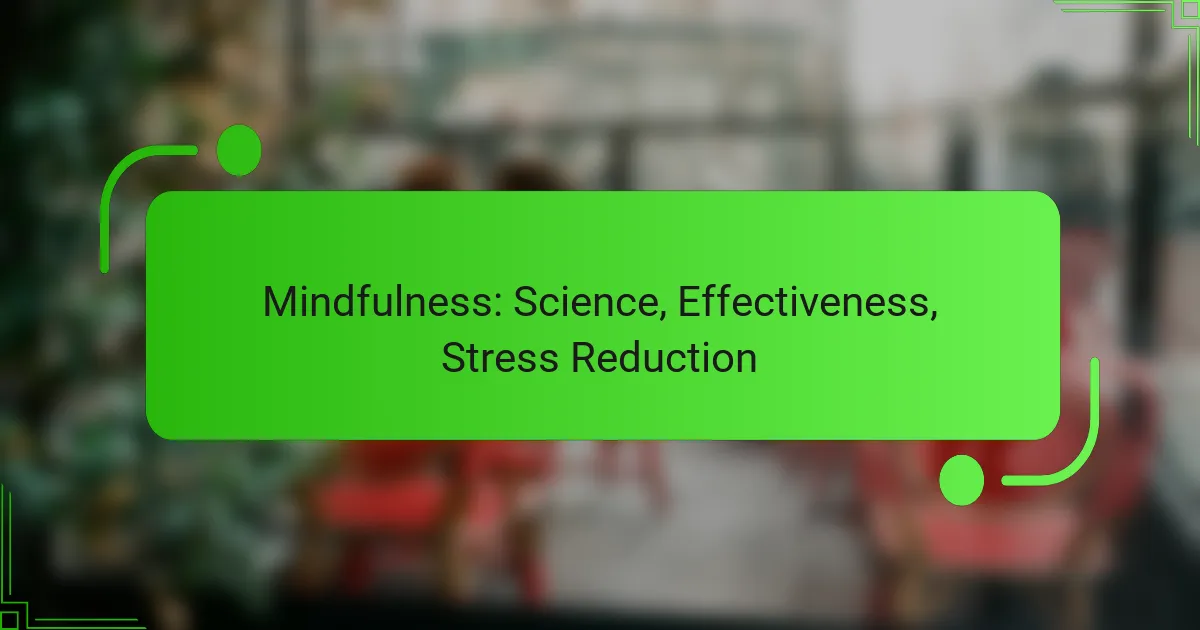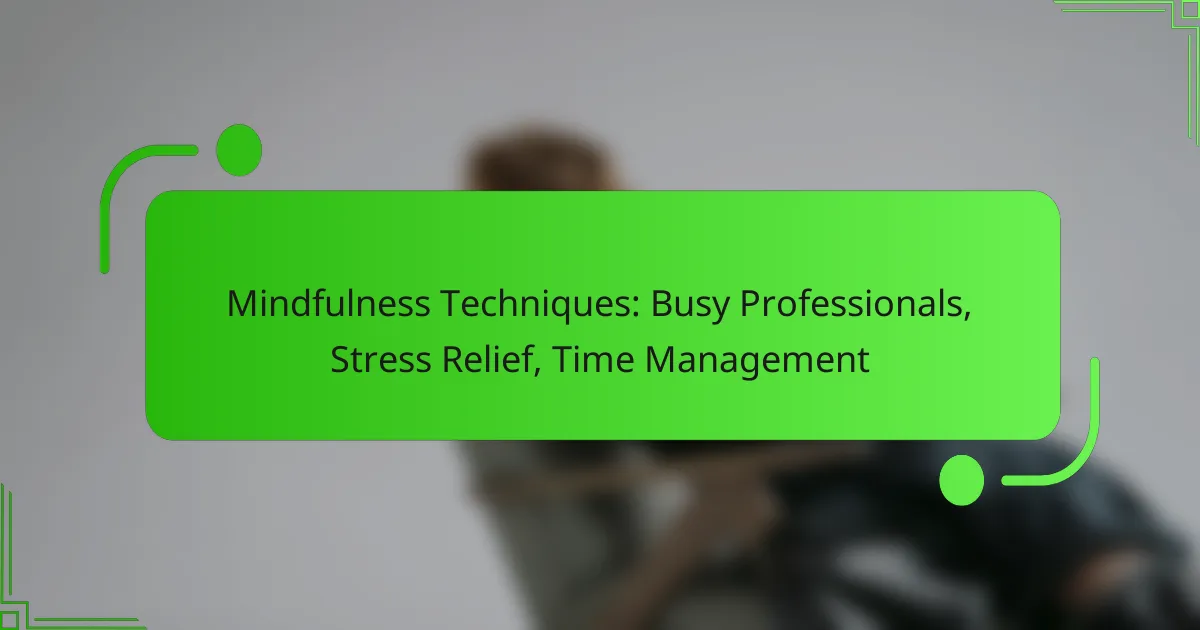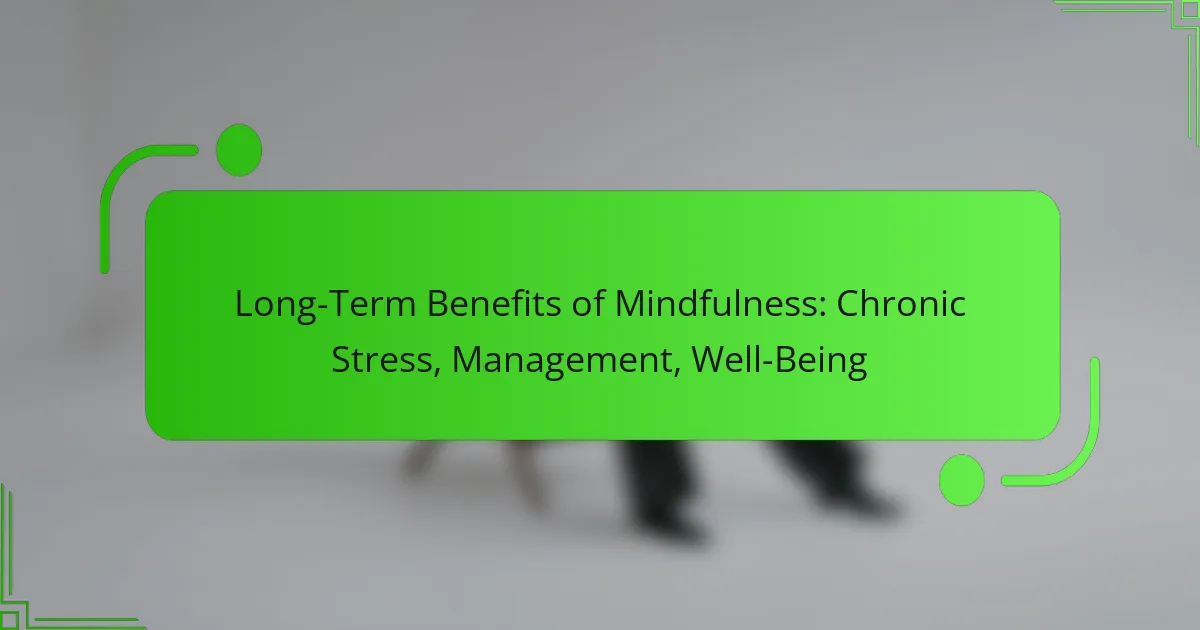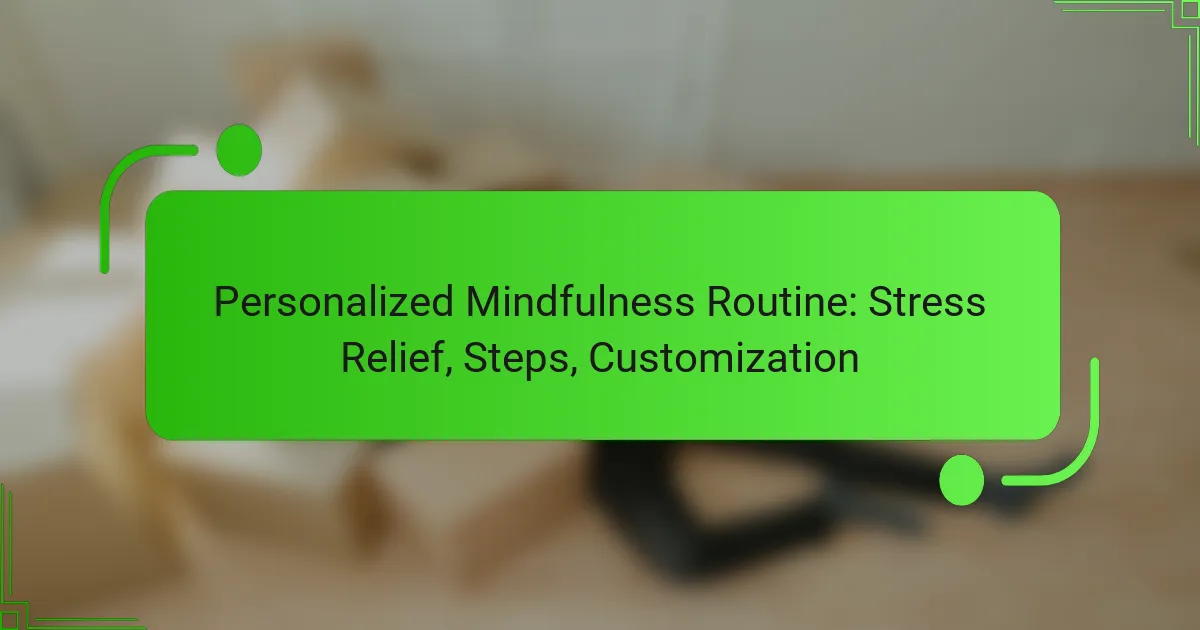Mindfulness is a powerful practice that fosters awareness and acceptance of the present moment, significantly aiding in stress reduction. Scientific research supports its effectiveness, demonstrating improvements in mental health, emotional regulation, and overall well-being through techniques such as mindful breathing and body scan meditation.
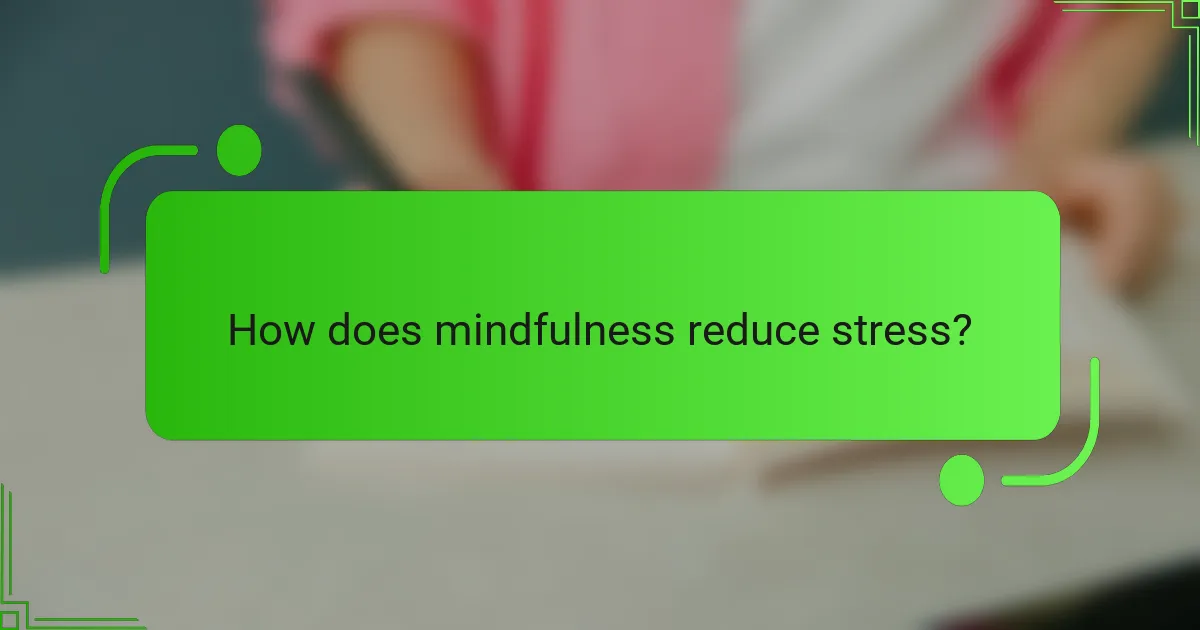
How does mindfulness reduce stress?
Mindfulness reduces stress by promoting awareness and acceptance of the present moment, which helps individuals manage their reactions to stressors. By practicing mindfulness techniques, people can lower their physiological stress responses, improve mental clarity, and enhance emotional resilience.
Physiological benefits
Mindfulness practice can lead to significant physiological benefits, including reduced heart rate and lower blood pressure. These changes occur as the body shifts from a state of stress to a more relaxed state, often referred to as the “rest and digest” mode.
Regular mindfulness meditation has been shown to decrease cortisol levels, a hormone associated with stress. This reduction can improve overall health, potentially lowering the risk of stress-related conditions such as hypertension and heart disease.
Cognitive improvements
Mindfulness enhances cognitive functions such as attention, focus, and memory. By training the mind to stay present, individuals can improve their ability to concentrate on tasks and reduce distractions.
Practicing mindfulness can also foster better decision-making skills. When stress is managed effectively, cognitive clarity improves, allowing for more rational and thoughtful responses to challenges.
Emotional regulation
Mindfulness aids in emotional regulation by helping individuals recognize and accept their feelings without judgment. This awareness allows for a more measured response to emotional triggers, reducing impulsive reactions.
By cultivating a non-reactive stance towards emotions, mindfulness can decrease anxiety and depressive symptoms. This practice encourages individuals to observe their thoughts and feelings, leading to greater emotional resilience over time.
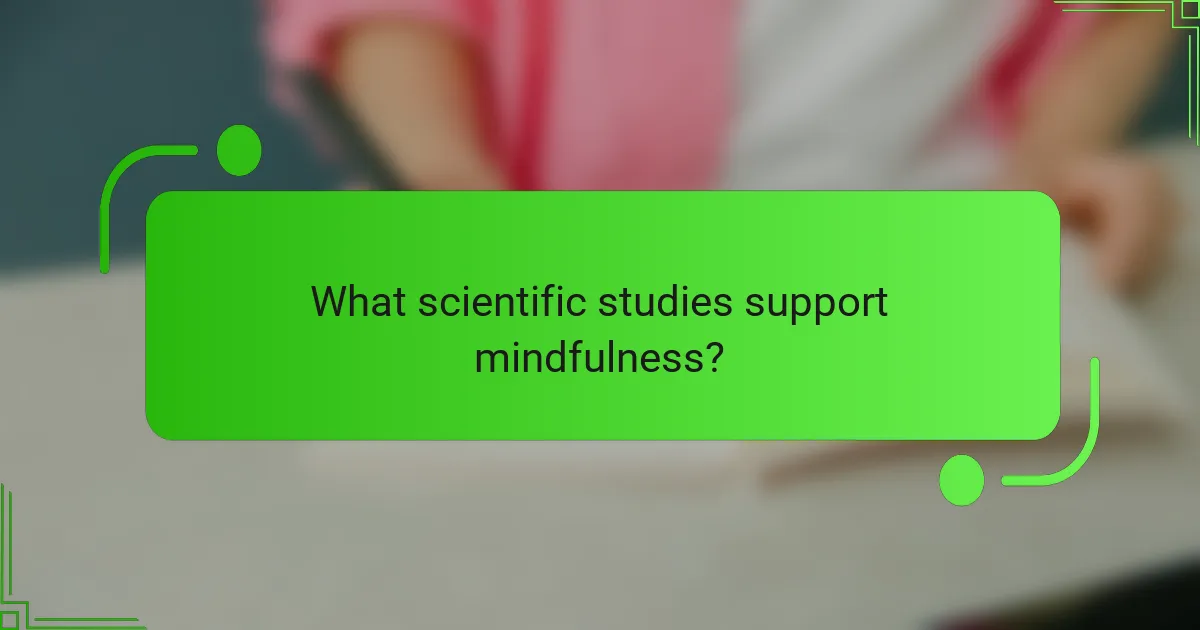
What scientific studies support mindfulness?
Numerous scientific studies validate the effectiveness of mindfulness in reducing stress and enhancing overall well-being. Research consistently shows that mindfulness practices can lead to significant improvements in mental health, emotional regulation, and stress management.
Research by Jon Kabat-Zinn
Jon Kabat-Zinn is a pioneer in mindfulness research, known for developing the Mindfulness-Based Stress Reduction (MBSR) program. His studies demonstrate that participants in MBSR experience reductions in anxiety, depression, and stress levels. These findings highlight mindfulness as a practical tool for improving mental health.
Kabat-Zinn’s work emphasizes the importance of regular practice, suggesting that even short daily sessions can yield substantial benefits. His research indicates that mindfulness can enhance emotional resilience and increase awareness of the present moment.
Meta-analysis findings
Meta-analyses of mindfulness studies reveal that mindfulness practices can lead to moderate reductions in stress and anxiety across diverse populations. One comprehensive analysis found that mindfulness interventions were effective in improving psychological well-being, with effects lasting beyond the intervention period.
These analyses often highlight the variability in outcomes based on practice duration and frequency. Generally, longer and more consistent practice correlates with greater benefits. Practitioners are encouraged to integrate mindfulness into their daily routines for optimal results.
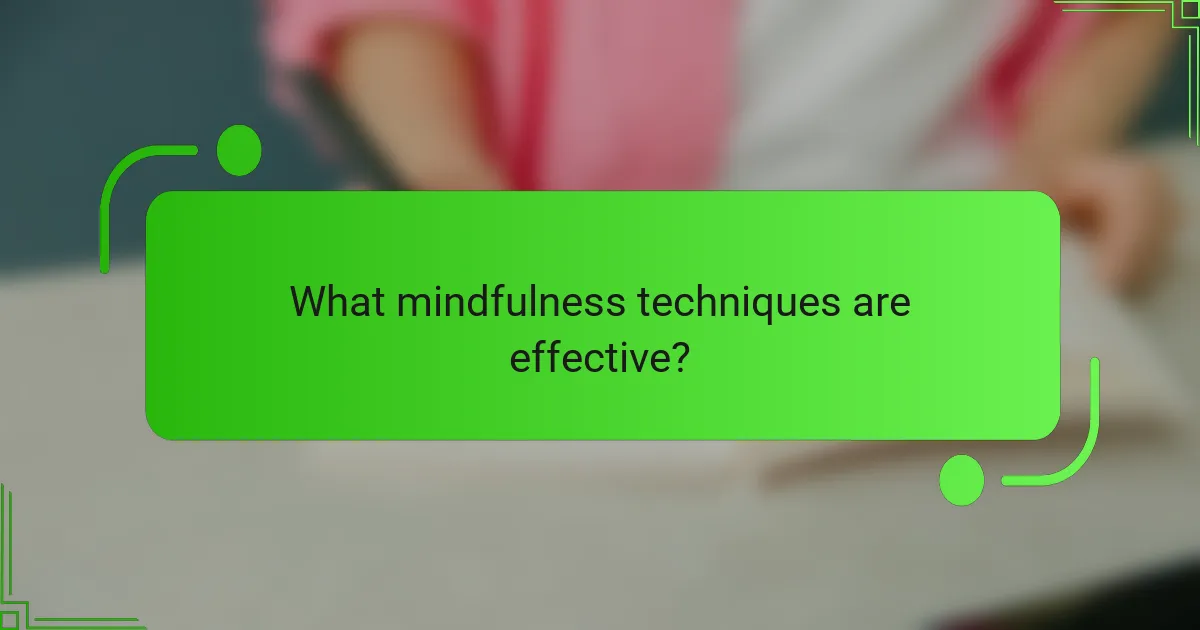
What mindfulness techniques are effective?
Effective mindfulness techniques include mindful breathing, body scan meditation, and guided imagery. These practices help individuals focus their attention, reduce stress, and enhance overall well-being.
Mindful breathing
Mindful breathing involves paying close attention to your breath, noticing each inhale and exhale. This technique can be practiced anywhere and only requires a few minutes to be effective.
To practice mindful breathing, find a comfortable position, close your eyes, and take deep breaths. Focus on the sensation of air entering and leaving your body. If your mind wanders, gently bring your attention back to your breath.
A common pitfall is trying to control your breathing; instead, let it flow naturally while maintaining awareness. Aim for sessions of 5-10 minutes to start, gradually increasing as you become more comfortable.
Body scan meditation
Body scan meditation is a technique that involves mentally scanning your body for areas of tension or discomfort. This practice promotes relaxation and helps cultivate a deeper connection with your physical self.
To perform a body scan, lie down comfortably and focus on each part of your body, starting from your toes and moving up to your head. Spend a few moments on each area, noticing sensations without judgment.
It’s helpful to practice this technique for 10-20 minutes in a quiet space. Be aware of common distractions, such as discomfort or restlessness, and gently redirect your focus back to the body scan.
Guided imagery
Guided imagery involves visualizing peaceful scenes or experiences to promote relaxation and reduce stress. This technique can be particularly effective for those who find it challenging to focus through traditional meditation.
To practice guided imagery, find a quiet space and either listen to a recording or visualize a calming scene, such as a beach or forest. Engage all your senses to enhance the experience—imagine the sounds, smells, and textures.
Start with sessions of 10-15 minutes, gradually increasing the duration as you become more familiar with the practice. Avoid rushing through the visualization; allow yourself to fully immerse in the experience for maximum benefit.
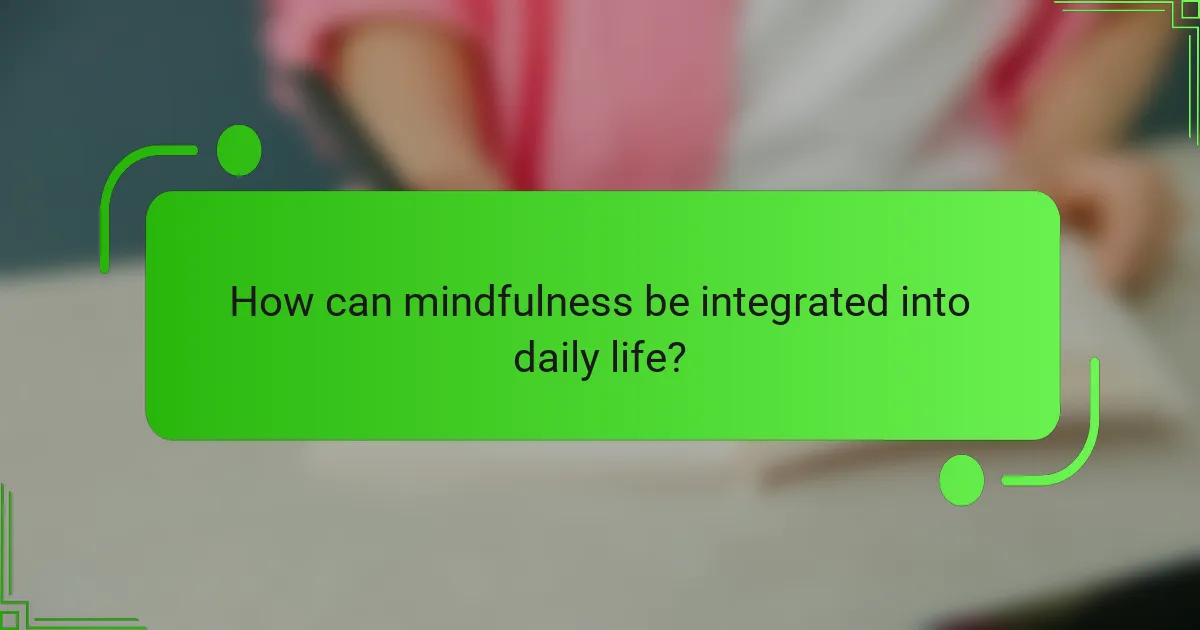
How can mindfulness be integrated into daily life?
Mindfulness can be seamlessly incorporated into daily routines through simple practices that promote awareness and presence. This can include setting aside a few minutes each day for meditation, engaging in mindful eating, or taking short breaks to focus on breathing.
Mindfulness apps like Headspace
Mindfulness apps such as Headspace offer guided meditations and mindfulness exercises that can be easily accessed on smartphones. These apps typically provide a range of sessions, from just a few minutes to longer practices, catering to different skill levels and time constraints.
Using an app can help establish a consistent mindfulness practice by sending reminders and tracking progress. Many apps offer free trials or basic versions, making them accessible for anyone looking to enhance their mindfulness journey.
Workplace mindfulness programs
Workplace mindfulness programs are designed to reduce stress and improve employee well-being through structured mindfulness practices. These programs often include workshops, guided sessions, and resources that encourage employees to incorporate mindfulness into their workday.
Implementing such programs can lead to increased productivity and reduced absenteeism. Companies may choose to partner with mindfulness experts or use online platforms to provide accessible training and support for their staff.
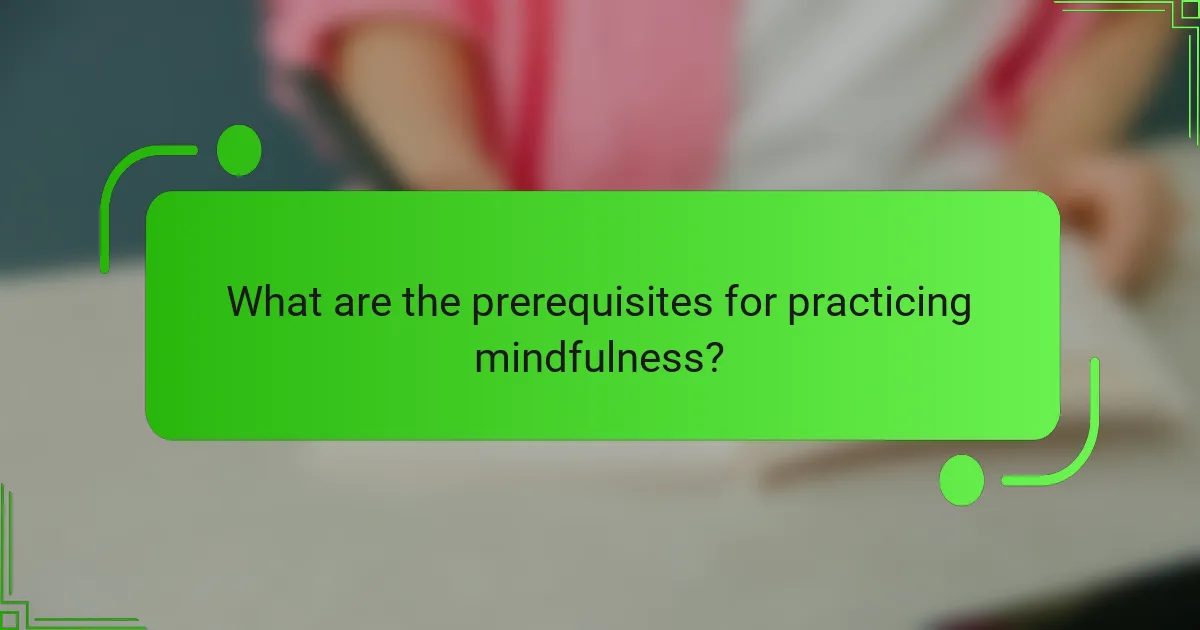
What are the prerequisites for practicing mindfulness?
Practicing mindfulness effectively requires an open-minded approach and a commitment to regular practice. These prerequisites help individuals cultivate the necessary mindset and habits to experience the full benefits of mindfulness techniques.
Open-mindedness
Open-mindedness is essential for embracing mindfulness practices. It involves being receptive to new ideas and experiences, which can enhance your ability to engage with mindfulness exercises without preconceived notions. This attitude allows you to explore different techniques and find what resonates with you.
To foster open-mindedness, consider setting aside judgments and expectations during your mindfulness sessions. Approach each practice with curiosity, as if you are trying something for the first time. This can lead to deeper insights and a more enriching experience.
Commitment to practice
A strong commitment to regular practice is crucial for developing mindfulness skills. Consistency helps reinforce the techniques and allows you to integrate mindfulness into your daily life. Aim for short, daily sessions, even if they last only a few minutes, to build a sustainable routine.
To maintain your commitment, set specific goals for your mindfulness practice. For example, you might decide to meditate for 10 minutes each morning or practice mindful breathing during your lunch break. Tracking your progress can also motivate you to stay engaged and accountable.
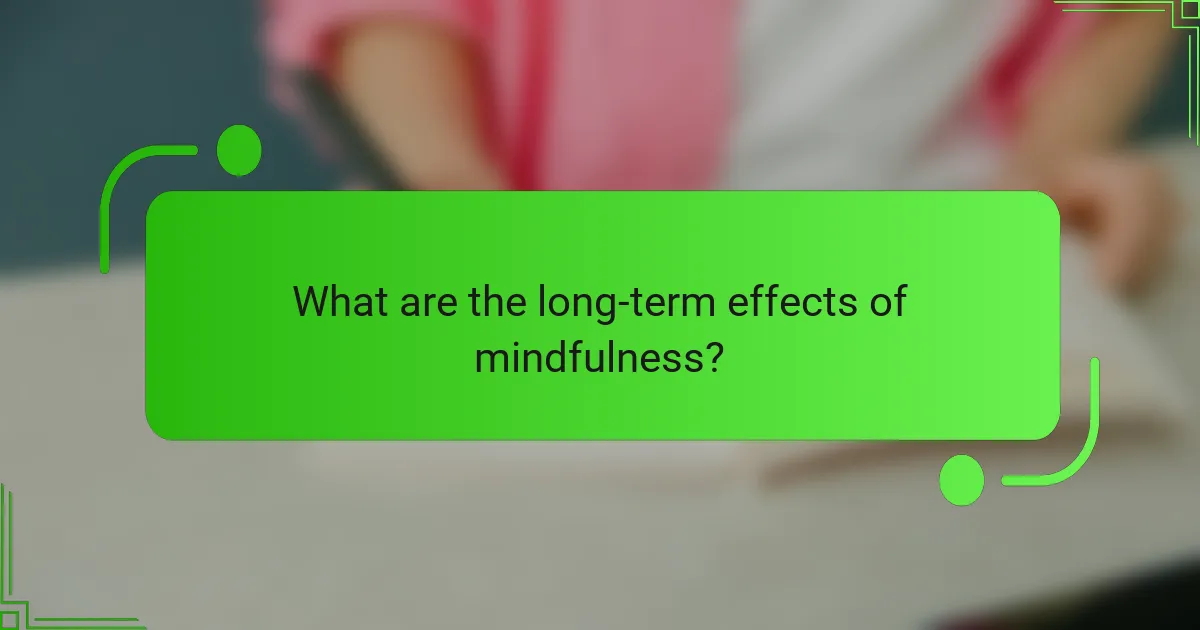
What are the long-term effects of mindfulness?
The long-term effects of mindfulness include significant improvements in mental health, focus, and overall well-being. Regular mindfulness practice can lead to lasting changes in brain function and emotional regulation, helping individuals manage stress and anxiety more effectively.
Improved mental health
Mindfulness has been shown to reduce symptoms of anxiety and depression over time. By promoting a non-judgmental awareness of thoughts and feelings, individuals can develop healthier coping mechanisms and a more positive outlook on life.
Studies suggest that consistent mindfulness practice can lower cortisol levels, the hormone associated with stress. This reduction may lead to fewer stress-related health issues, enhancing overall mental resilience.
Enhanced focus and productivity
Practicing mindfulness can significantly improve concentration and cognitive performance. Individuals often report being able to focus better on tasks, leading to increased productivity in both personal and professional settings.
Mindfulness techniques, such as meditation, can train the brain to minimize distractions and enhance attention span. Simple practices, like taking short breaks to breathe deeply or meditate for a few minutes, can yield noticeable improvements in focus throughout the day.
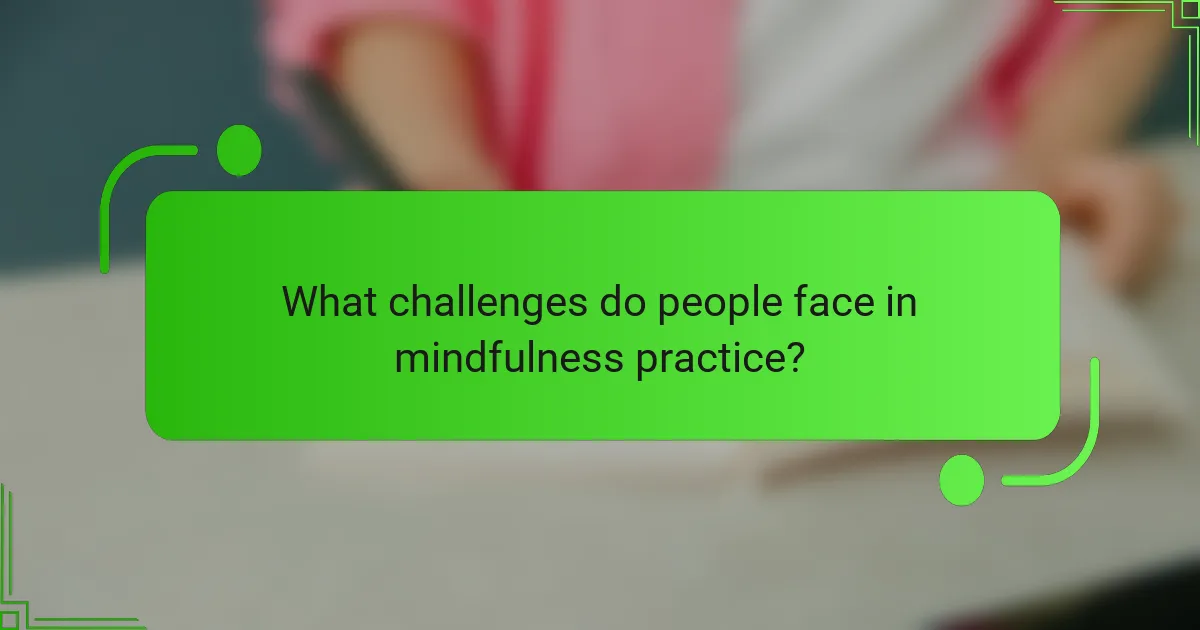
What challenges do people face in mindfulness practice?
People often encounter several challenges in mindfulness practice, including maintaining focus and managing time effectively. These obstacles can hinder the ability to fully engage with mindfulness techniques and experience their benefits.
Difficulty maintaining focus
Maintaining focus during mindfulness practice can be particularly challenging due to distractions from both internal thoughts and external environments. It is common for the mind to wander, making it difficult to stay present. Practitioners may find it helpful to gently acknowledge distractions and return their attention to the breath or a chosen focal point.
To improve focus, consider setting a specific duration for practice, starting with shorter sessions of around 5 to 10 minutes. Gradually increasing this time can help build concentration without overwhelming the practitioner. Techniques such as guided meditations or using mindfulness apps can also provide structure and support.
Time constraints
Many individuals struggle to find time for mindfulness practice amid busy schedules. The perception that mindfulness requires lengthy sessions can deter people from starting or maintaining a routine. However, even brief moments of mindfulness can be beneficial.
Incorporating mindfulness into daily activities, such as during commutes or while eating, can help overcome time constraints. Practicing for just a few minutes a day can yield positive effects. Setting reminders or scheduling specific times for mindfulness can also enhance consistency and commitment.
